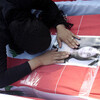
The Government of Lebanon’s (GOL) Higher Relief Council (HRC) reports to date that 1,187 Lebanese have been killed and approximately 4,060 injured. Unexploded ordnances, particularly cluster munitions, remains the most urgent threat to the beneficiaries and humanitarian workers. 12 people have been killed and 51 wounded by UXO and cluster bombs since 14 August. The Mine Action Coordination Centre has thus far 249 strike locations, a figure which is expected to rise. Demining activities are ongoing by the Lebanese army in Nabatieh, clearing residential areas such as Zawtar and by UNMACC in Yohmor, Smayieh, Ras Al Ain, Tebnine and Aita Al Jabal in South Lebanon. Read more about OCHA: Unexploded ordnances the most urgent threat
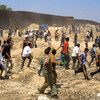
The nearly two-month long Israeli military operation in the Gaza Strip continues to exact a heavy toll on the 1.4 million Palestinians living in the Gaza Strip. Two hundred and two (202) Palestinians, including 44 children have been killed since 28 June, when ‘Operation Summer Rains’ (the Israel Defense Forces (IDF) name for the offensive) began. One IDF soldier has been killed and 26 Israelis injured in the same period. Read more about Palestinian death toll reaches 202 as 'Operation Summer Rains' extends into its tenth week

The IDF has engaged elements of Hezbollah in the Beka’a Valley close to the village of Bodai in an overnight raid. The mission reportedly killed three Hezbollah militants; one Israeli soldier was killed in the attack. The IDF insists that the raid was aimed at disrupting an arms transfer, and was clearly a “defensive” operation. The UN Special Envoy, Terje Roed-Larsen, termed the incident an “unwelcome development” a day after the Secretary-General warned of a ‘fragile’ situation on the ground. In addition, UXO contamination continues to be reported across the South. Cluster bombs have been observed in large numbers in population areas and where intense fighting took place. Read more about Israeli raid condemned as plans made to clear landmines
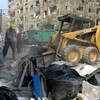
The UN Mine Action Coordination Centre (UNMACC) is sending reconnaissance teams through damaged areas in southern Lebanon to locate cluster bomb strikes. Fifty-one individual strike locations have been confirmed with the teams having covered approximately 40% of damaged areas thus far. The total number of strikes is expected to rise to over 200. In addition, at least 20 air-dropped bombs, ranging in size from 500lbs to 2,000lbs, have been located. The UNMACC has estimated that it could take 12 months to clear UXOs from southern Lebanon. Read more about Mine-clearing begins in Southern Lebanon
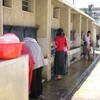
UNHCR reports that they expect some 120,000 people to have returned to Lebanon from Syria by midnight tonight with collective centers at Aleppo, Homs and Tartus virtually empty. WFP estimates that only 1,850 people are left in shelters in Damascus. The UK’s Mine Action Group (MAG) warns that UXO clearance of some villages on the Nabatiye area alone will take weeks. Clearance of UXOs near civilian residences is a priority with the rush to return. MAG suggests that the UXO contamination in Lebanon is on a far higher scale than that identified in Iraq after the end of the war in 2003. Read more about Lebanese return as Beirut airport opens for business
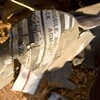
According to the Government of Lebanon (GoL) Higher Relief Committee (HRC) the number of casualties now stands at 1,056 people killed. It estimates that some 971,361 Lebanese have been displaced, inside and outside the country. UNRWA estimates that some 16,000 Palestinian refugees have been displaced by the conflict and an additional 5,500 Lebanese IDPs have moved into Palestinian camps. After drops of warning leaflets on the Burj Barajneh camp in southern Beirut, around a third of the camp population - up to 3,000 people - evacuated the camp yesterday evening. Read more about OCHA: 971,361 displaced in Lebanon, including 16,000 Palestinian refugees
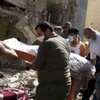
The Government of Lebanese’s (GoL) Government Higher Relief Committee (HRC) have reported that 1,020 people, 192 deaths more than at the same time last week, have been killed and 3,508 injured in the conflict to date. Information on the general displaced population from the HRC essentially remains static (960,000 displaced overall with some 700,000 still located in Lebanon). In the South, local authorities have estimated that 130,000 remain, including residents and IDPs in the Tyre area; 40,000 Palestinians in the Tyre refugee camp; and another 25,000 people along the border/Blue Line. Read more about OCHA: 1,020 Lebanese dead; 3,508 injured; 960,000 displaced
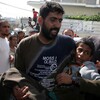
Since the beginning of Operation Summer Rains - the IDF codename of the military operation which began on 28 June - 184 Palestinians, including 42 children, have been killed; 650 Palestinians injured. One IDF soldier was killed, 25 Israelis injured, including 11 by homemade rockets fired from the Gaza Strip. Up to 3,400 Palestinians have sought shelter in UNRWA installations as a result the IDF operation. UNDP initial estimates total $15.5 million in damages to Gaza’s infrastructure from IDF incursions, artillery shellings and air strikes excluding the damage caused to the Gaza power plant. Read more about "Sharp decline" in the humanitarian situation in Gaza after six weeks of siege
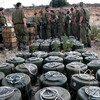
4 August 2006 — The Government of Lebanon’s (GoL) Higher Relief Council (HRC) today reports that 907 people have been killed and 3,293 people have been injured due to the on-going conflict. The HRC also reports that 913,760 people (of which almost half are children), about one-quarter of Lebanon’s population, have fled their homes. Most of the displaced are said to be located in South Beirut, Tyre (Sur), Sidon (Saida), Chouf, and Aaley. Although an estimated 565,000 displaced persons are staying with relatives and friends, the HRC estimates 128,000 are located in schools and public institutions in Lebanon, and 220,000 have fled to neighboring countries, including 150,000 to Syria. Read more about Road Corridor from Syria Disrupted
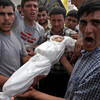
United Nations Relief and Works Agency for Palestine Refugees in the Near East, UN Office for the Coordination of Humanitarian Affairs, World Food Programme, World Health Organization, UN Food and Agriculture Organization, United Nations Children's Fund, United Nations Population Fund (UNFPA) and United Nations Development Fund for Women (UNIFEM)
3 August 2006
The United Nations humanitarian agencies working in the occupied Palestinian territory are deeply alarmed by the impact continuing violence is having on civilians and civilian infrastructure in Gaza, which has resulted in a sharp decline in the humanitarian situation facing 1.4 million people, more than half of them children. We are concerned that with international attention focusing on Lebanon, the tragedy in Gaza is being forgotten. We estimate that since 28 June, 175 Palestinians have been killed, including approximately 40 children and eight women, and over 620 injured in the Gaza Strip. Read more about UN Agencies: Deeply alarmed by continuing violence in Gaza









